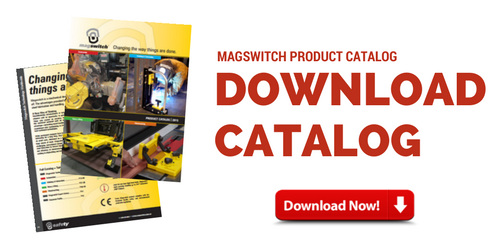Magswitch is a revolutionary new technology in switchable magnetics that allows harnessing of powerful rare earth magnets with a simple 180-degree knob turn. Packing an unprecedented level of efficiency, Magswitch uses the pole phase of two strong earth magnets in correspondence with each other. Whenever the device is turned on, the magnetic energy trapped within the discs become synchronized, providing the user with a huge amount of lifting force.
The advantage of Magswitch is its wide range of usability, which enables deep penetrating field to lift heavy materials but allowing it to hold strongly to thinner sheets of metals as well. When put head to head with the competition, Magswitch takes the lead with its lightweight properties, reliability, efficiency, and it doesn’t have any electric, overheating or size problems.Magswitch technology uses the alignments of rare earth magnets in relation to each other for developing magnetic fields that are able to provide an ultra-lift that is efficiently unachievable through electromagnets. Built for scalability, Magswitch Products have force control through which the intensity of the attractive forces can be controlled.
Magswitch’s state-of-the-art features include:
If you’re still wondering as to how Magswitch products manage to harness magnetic energy without using any electromagnets, the answer is their patented research. The elimination of electricity gives Magswitch an unsurpassable edge over conventional solutions as the ability to harness huge amount of energy while keeping the apparatus portable is a great feature.
Magswitch technology is implementable at all places where electromagnets are in use. Some examples include:
Food-for-thought: Imagine the amount of electricity and cooling required to have an electromagnet lift 1000 pounds of steel. The Magswitch MagSquares does this without any batteries! In conclusion, Magswitch has the innovation for trustworthy, quality products that can help to significantly improve your day-to-day operations.
Interested in learning more?
You may also be interested in reading:




